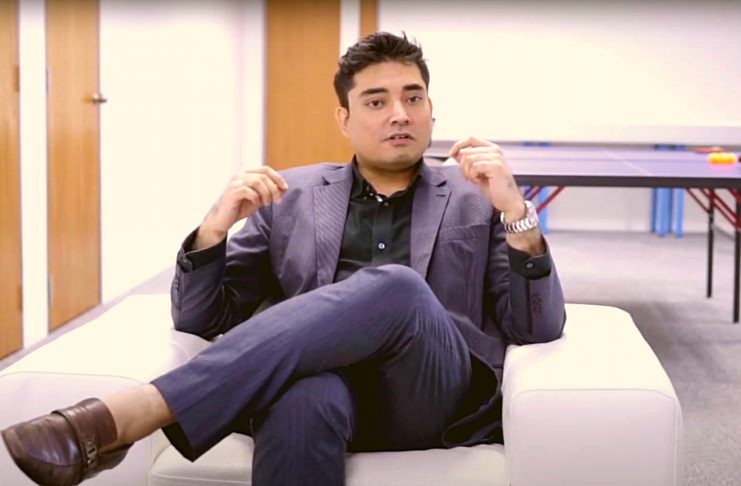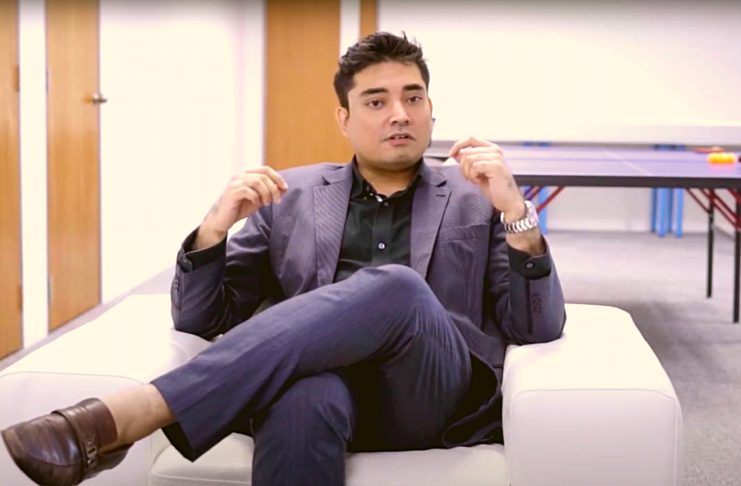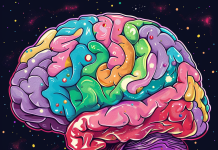Unlocking the Memory Vault: Sancy Suraj’s Secrets to Retention
In today’s fast-paced world, where information overload has become the norm, the ability to retain and recall information is crucial for success in various aspects of life, ranging from academics and work to everyday tasks. Sancy Suraj, a renowned memory athlete and trainer, has gained international recognition for his exceptional memory feats and his expertise in teaching memory techniques to thousands of individuals worldwide. With his impressive achievements, including holding a Guinness World Record and multiple Singapore Book of Records, Sancy Suraj has become a trusted authority on memory retention. In this article, we delve into Sancy Suraj’s secrets to improving retention and long-term memory, as he shares his insights and techniques in response to commonly asked questions.
Can you share some of your secrets to improving retention and long-term memory?

As a memory athlete and trainer who has helped thousands of people worldwide improve their memory and retention abilities, I have developed a set of secrets and techniques that can unlock the memory vault and enhance long-term memory. One of the key secrets is to utilize the power of visualization. Our brains are wired to remember images more easily than abstract concepts, so I encourage individuals to create vivid mental images when learning new information. This could involve creating a mental movie, a mind map, or associating the information with familiar objects or locations. By engaging multiple senses through visualization, such as sight, sound, and even smell, we can anchor the information in our minds more effectively, leading to improved retention.
Another secret to enhancing retention is to practice active engagement with the information. This means actively processing and organizing the information rather than passively reading or listening to it. For example, I teach techniques like the “Magnetic Memory Method,” which involves transforming information into bite-sized chunks and associating them with memorable images or pegs. This approach helps individuals actively encode the information and create meaningful connections, making it easier to retrieve the information from memory later on.
Additionally, incorporating regular review sessions is crucial for long-term retention. Our brains tend to forget information over time if not reinforced, so I emphasize the importance of spaced repetition. This involves revisiting the information at intervals, gradually increasing the spacing between review sessions. This allows the brain to consolidate the information into long-term memory more effectively, leading to better retention in the long run.
Lastly, managing stress and getting enough sleep are critical factors that impact memory retention. High stress levels and lack of sleep can impair cognitive function and memory consolidation, making it harder to retain information. I emphasize the importance of maintaining a healthy lifestyle, managing stress through techniques like meditation or exercise, and prioritizing adequate sleep to optimize retention abilities.
In conclusion, improving retention and long-term memory requires a combination of techniques and strategies. By leveraging the power of visualization, actively engaging with the information, incorporating regular review sessions, and managing stress and sleep, individuals can unlock the memory vault and enhance their retention abilities, leading to improved performance in various aspects of everyday life.
How do you approach the challenge of retaining information in a fast-paced, information-rich world?
As a memory athlete and trainer in today’s fast-paced, information-rich world, I understand the challenges individuals face in retaining information effectively. To overcome these challenges, I advocate for a proactive approach that involves being strategic and intentional in managing the influx of information. One of the key strategies I recommend is to prioritize and filter information based on relevance and importance. With the abundance of information available, it’s crucial to discern what is truly valuable and relevant to one’s goals or interests, and focus on retaining that information.
Another approach I advocate is to leverage technology and tools to aid retention. Digital note-taking, using mnemonic devices, and utilizing memory-enhancing apps or software can be valuable aids in organizing and retaining information. These tools can help individuals streamline information, create visual cues, and reinforce learning through repetition, all of which contribute to improved retention in a fast-paced world.
Additionally, I emphasize the importance of creating a conducive learning environment. Distractions can hinder retention, so finding a quiet space, minimizing interruptions, and being fully present during the learning process can help optimize retention. Practicing mindfulness and being aware of one’s cognitive load can also help individuals manage information overload and retain information more effectively.
Lastly, I encourage individuals to adopt a holistic approach to retention by taking care of their overall well-being. Proper nutrition, regular exercise, and adequate sleep all play a crucial role in cognitive function and memory retention. Engaging in activities that promote relaxation and mental rejuvenation, such as meditation or hobbies, can also help manage stress and optimize retention abilities.
In conclusion, retaining information in a fast-paced, information-rich world requires strategic and intentional efforts. By prioritizing and filtering information, leveraging technology, creating a conducive learning environment, and taking care of overall well-being, individuals can overcome the challenges of retention and improve their ability to retain information effectively in today’s fast-paced world.
What are some specific techniques or strategies individuals can use to enhance their retention abilities?
As a memory athlete and trainer, I believe that identifying our unique retention strengths and weaknesses is crucial in tailoring our memory training for optimal results. We all have our own preferred learning styles and memory capabilities, and understanding these can greatly enhance our ability to retain information.
One approach to identifying our retention strengths and weaknesses is through self-assessment. Reflecting on our past learning experiences, we can identify patterns or strategies that have worked well for us. For example, we may find that visual aids, such as diagrams or charts, are particularly helpful for our retention, or that verbal or auditory techniques, such as listening to lectures or discussing concepts with others, resonate with us more. By recognizing our preferred learning style, we can incorporate strategies that align with our strengths into our memory training.
Another approach is to seek feedback from others. Peers, mentors, or instructors can provide valuable insights and observations about our retention abilities. For instance, they may notice that we perform well in certain types of tasks or struggle with specific types of information. Feedback from others can help us gain a different perspective and identify our retention strengths and weaknesses more objectively, allowing us to make adjustments in our memory training accordingly.
Additionally, using memory assessments or tests can provide quantitative measures of our memory performance, helping us identify our retention abilities objectively. By analyzing the results of memory assessments, we can gain insights into our strengths and weaknesses in different aspects of memory, such as recall, recognition, or pattern recognition. This information can guide us in tailoring our memory training to focus on areas where we need improvement.
Furthermore, self-reflection and self-awareness are crucial in identifying retention strengths and weaknesses. Being mindful of our own learning process and outcomes, we can pay attention to which strategies or techniques are most effective for us and which ones may not be working as well. By being self-aware, we can make informed decisions about how to optimize our memory training based on our unique retention strengths and weaknesses.
In conclusion, identifying our retention strengths and weaknesses is essential for tailoring memory training to our individual needs. Through self-assessment, seeking feedback from others, using memory assessments, and self-reflection, we can gain insights into our unique retention abilities and optimize our memory training for improved retention and recall of information.
“Your memory is as unique as your fingerprints, and unlocking your retention potential requires a personalized approach. By identifying your retention strengths and weaknesses through self-assessment, feedback from others, memory assessments, and self-reflection, you can tailor your memory training to align with your preferred learning style and optimize your ability to retain and recall information.”
Can you share any insights or research on the science of memory retention and how it can be applied to everyday life?
As a memory athlete and trainer, I am well-versed in the science of memory retention and how it can be applied to everyday life. Understanding the underlying principles of how our memory works can help us develop effective strategies and techniques to enhance our retention abilities.
One key insight from memory research is that our brains are wired to process information in a way that is meaningful and relevant to us. Therefore, making information personally relevant and meaningful can significantly improve retention. This can be achieved by relating new information to our existing knowledge or experiences, or by attaching emotional significance to the information. For example, we can create associations between new information and familiar concepts, use mnemonic devices or visual imagery to aid in recall, or attach emotional significance to the information by connecting it to our personal experiences or values.
Another important aspect of memory retention is the role of repetition and practice. Research has shown that repeated exposure to information over time strengthens the neural connections associated with that information, making it easier to retrieve and retain in the long-term. Therefore, incorporating regular review sessions and practice opportunities into our learning process can greatly enhance our retention abilities. This can be done through various techniques such as spaced repetition, where we review information at intervals, or active recall, where we actively retrieve information from memory rather than simply re-reading or re-watching it.
Furthermore, the context in which we learn and retrieve information can also impact retention. Research has shown that memory is context-dependent, meaning that we tend to recall information better when we are in the same context or environment in which we learned it. Therefore, creating a conducive learning environment and trying to recreate that environment during retrieval can improve retention. This can involve studying in a consistent location, minimizing distractions, and utilizing similar cues or cues that were present during the initial learning process.
Lastly, taking care of our overall well-being can also impact our retention abilities. Factors such as sleep, nutrition, and stress levels can all influence our cognitive function, including memory. Getting enough quality sleep, eating a balanced diet, and managing stress can all support optimal brain function and improve our ability to retain information.
In conclusion, understanding the science of memory retention and applying relevant techniques and strategies can greatly enhance our retention abilities in everyday life. Making information personally relevant, incorporating repetition and practice, considering the context of learning and retrieval, and taking care of our overall well-being are all important considerations in optimizing our memory retention for improved learning and recall.
How do you help individuals identify their own unique retention strengths and weaknesses and tailor their memory training accordingly?
As a memory athlete and trainer, I believe that helping individuals identify their own unique retention strengths and weaknesses is essential for tailoring their memory training accordingly. Everyone has their own preferred learning style and memory capabilities, and understanding these can optimize the effectiveness of memory training.
One approach to identifying retention strengths and weaknesses is through self-assessment. Individuals can reflect on their learning experiences and identify patterns or strategies that have worked well for them in the past. For example, some individuals may find that visual aids, such as diagrams or charts, are particularly helpful for their retention, while others may prefer verbal or auditory techniques, such as listening to lectures or discussing concepts with others. By recognizing their preferred learning style, individuals can incorporate strategies that align with their strengths into their memory training.
Another approach is to seek feedback from others. Peers, mentors, or instructors can provide insights and observations about an individual’s retention abilities. For example, they may notice that an individual performs well in certain types of tasks or struggles with specific types of information. Feedback can provide valuable information for individuals to identify their retention strengths and weaknesses and make adjustments in their memory training accordingly.
Additionally, using memory assessments or tests can help individuals identify their retention abilities objectively. These assessments can provide quantitative measures of an individual’s memory performance, such as their ability to recall information, recognize patterns, or make connections between concepts. By analyzing the results of memory assessments, individuals can gain insights into their strengths and weaknesses in different aspects of memory and tailor their training accordingly.
Furthermore, self-reflection and self-awareness are crucial in identifying retention strengths and weaknesses. Individuals can pay attention to their own learning experiences, noticing which strategies or techniques are most effective for them and which ones may not be working as well. By being mindful of their own learning process and outcomes, individuals can make informed decisions about how to optimize their memory training.
In conclusion, identifying retention strengths and weaknesses is essential for tailoring memory training to individual needs. Self-assessment, seeking feedback from others, using memory assessments, and self-reflection can all contribute to understanding one’s unique retention abilities. By identifying and leveraging retention strengths and addressing weaknesses, individuals can optimize their memory training and improve their ability to retain and recall information effectively.
“Memory training is not a one-size-fits-all approach. To optimize retention, one must first identify their unique strengths and weaknesses, and tailor their training accordingly. By understanding and leveraging our individual abilities, we can unlock our full potential for remembering and recalling information.”
As an editor, it is clear that Sancy Suraj’s expertise lies in his profound understanding of the science of memory retention and his ability to translate complex concepts into practical strategies that individuals can apply in their daily lives. When asked about his secrets to improving retention and long-term memory, Sancy Suraj emphasizes the importance of creating meaningful associations and connections between information. He explains how using visual imagery, emotions, and personal experiences can enhance the encoding process in the brain, making information more memorable and easier to recall. He also emphasizes the significance of managing stress, getting adequate sleep, and maintaining a healthy lifestyle, as these factors can impact memory function.
Furthermore, Sancy Suraj recognizes the challenges individuals face in a fast-paced, information-rich world. He emphasizes the importance of managing distractions, utilizing effective study techniques, and employing spaced repetition to optimize retention. He also highlights the need to adapt to different learning styles and preferences, and provides practical tips on how to customize memory training accordingly, depending on an individual’s strengths and weaknesses.
In addition, Sancy Suraj shares insights on the science of memory retention and how it can be applied to everyday life. He explains the role of the brain’s hippocampus, which is responsible for encoding and storing new memories, and how memory consolidation occurs during sleep. He also discusses the concept of neuroplasticity, which refers to the brain’s ability to adapt and change, and how individuals can harness this ability to improve their retention abilities.
Can you share some real-life examples or case studies of individuals who have improved their retention abilities through your methods?

As a memory athlete and trainer, I have witnessed numerous real-life examples of individuals who have improved their retention abilities through the methods I teach. One such example is a student who struggled with retaining information for exams. By implementing specific strategies and techniques, such as creating meaningful associations, utilizing spaced repetition, and managing their study environment, the student was able to significantly improve their retention and achieve better exam results.
Another example is a professional who needed to remember complex information for their job, such as product specifications and customer details. Through tailored memory training that focused on their unique strengths and weaknesses, the professional was able to develop effective memory techniques that helped them retain and recall the information more efficiently, leading to improved job performance and increased confidence in their abilities.
I have also worked with elderly individuals who were concerned about age-related memory decline. By incorporating memory exercises and techniques into their daily routine, they were able to sharpen their retention abilities and improve their overall cognitive function. This enabled them to maintain their independence and continue to engage in activities that required good memory skills, such as managing their finances and staying socially active.
Furthermore, I have seen individuals in high-stress environments, such as executives and entrepreneurs, benefit from memory training to cope with information overload and fast-paced decision-making. By implementing strategies such as active recall and creating meaningful connections between information, they were able to improve their retention abilities and make more informed decisions in their work.
These real-life examples highlight the effectiveness of the memory training methods I teach in improving retention abilities in various contexts and for different individuals. By understanding their unique strengths and weaknesses, tailoring their memory training accordingly, and consistently applying the techniques and strategies, individuals can experience significant improvements in their retention abilities, leading to enhanced learning, job performance, and overall cognitive function.
“Unlock the power of memory and you’ll unleash the potential within yourself. The ability to retain information is not just a skill, it’s a tool that can transform your life in ways you never thought possible.”
In conclusion, Sancy Suraj’s secrets to retention are based on a deep understanding of the science of memory and practical techniques that individuals can apply in their everyday lives. From creating meaningful associations to managing distractions and incorporating personalized strategies, Sancy Suraj’s insights can be invaluable for individuals seeking to enhance their retention abilities. Whether it’s for academic success, professional performance, or maintaining cognitive function as we age, Sancy Suraj’s methods have proven to be effective for individuals worldwide. By unlocking the memory vault through Sancy Suraj’s secrets, individuals can improve their ability to retain and recall information, unlocking new levels of success in their personal and professional endeavors.














